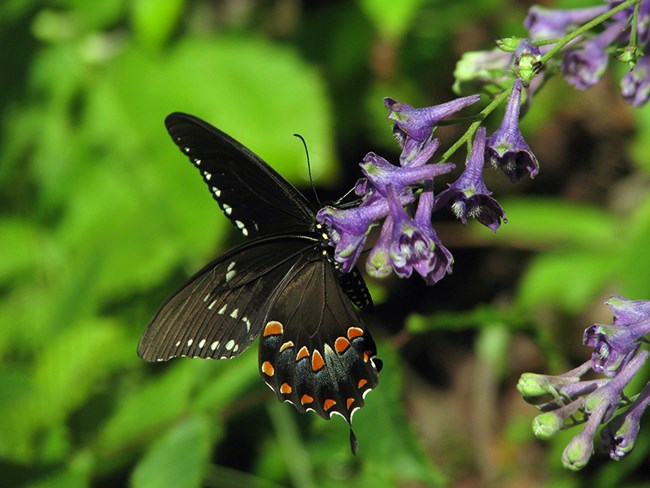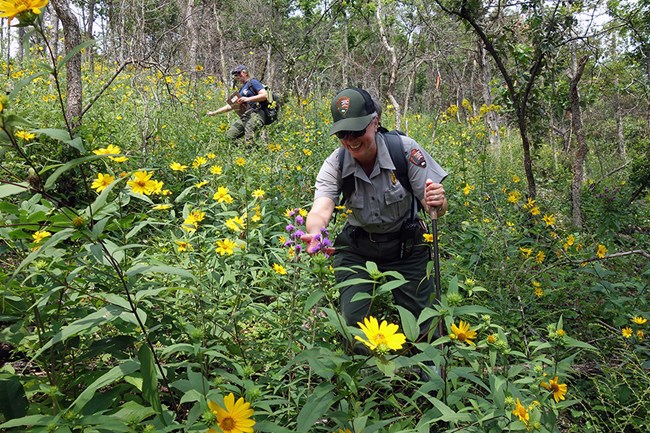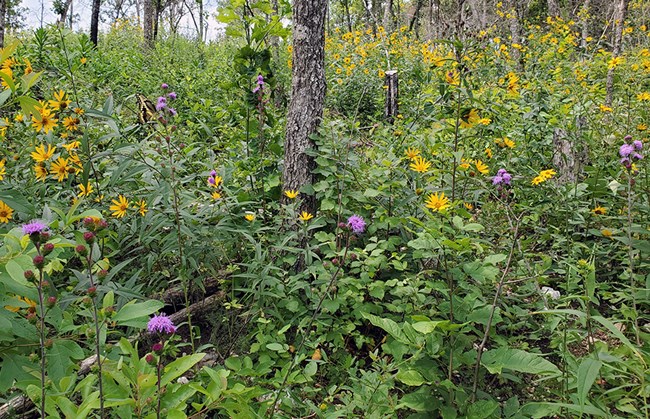Last updated: December 15, 2021
Article
Ozark National Scenic Riverways (ONSR) Partnered with Pioneer Forest for Record Setting Prescribed Burn

NPS, Angela Sokolowski
The largest populations of tall larkspur in a prescribed burn unit anywhere grows high on steep hills above the spring-fed Current River. With about 10,000 plants, these are also probably the largest populations of tall larkspur within a 600-acre area. This nationally rare wildflower (Delphinium exaltatum), increased most significantly in areas where the Eastern red cedars (Juniperus virginiana), were cut down and pile burned prior to prescribed fire conducted in March 2021.
Extensive pre-burn inventories, followed by post-burn monitoring of permanent plots, supports these lofty claims of success. Monitoring also showed a 560% increase in blooming Eastern blazing stars. The Eastern blazing star population in the Welch Lodge burn unit now ranks as the third largest in Missouri.

NPS
Pioneer Forest chose to contribute some of their land to the burn unit expansion because fire effects monitoring by park staff indicated tall larkspur, and other wildflowers important to pollinators, were significantly increasing after prescribed fire management.

NPS, Jamie Ladner
The profusion of wildflowers attracted flocks of colorful butterflies. In August 2021, Pioneer Forest brought their staff to tour the burn unit, and everyone was delighted with the contributions they had made to fuel-reduction and biodiversity.
Their contribution also included greatly improved habitat for prairie warblers which have declined nationally by over 70% since 1964. Recovering viable populations of declining species before they become endangered enriches our world, and saves the economic costs associated with reacting when a species is already in crisis.
